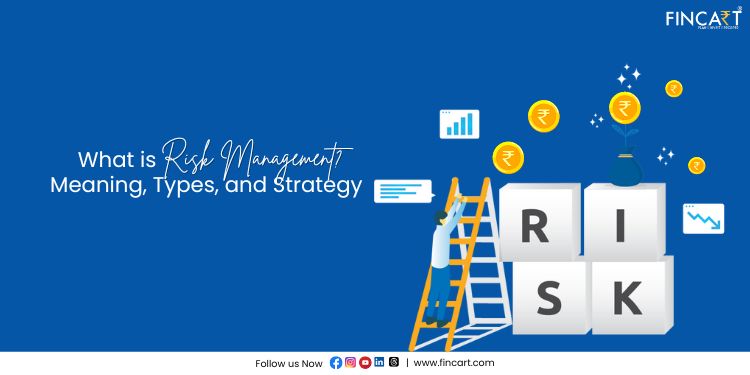What is Risk Management?
Risk management in investments refers to identifying, analyzing, and mitigating risks associated with investment activities. It involves assessing the potential risks and uncertainties that could affect the performance and value of investment portfolios. The aim is to minimize possible losses and protect capital while maximizing returns. Risk management in investments includes various strategies such as diversification, asset allocation, and risk assessment.
Diversification spreads investments across different asset classes and sectors to reduce exposure to any single investment. Asset allocation ensures a balanced mix of investments based on risk tolerance and financial goals. Risk assessment involves evaluating the risk-reward trade-off of investment options and making informed decisions.
Additionally, risk management may involve setting stop-loss orders, employing hedging strategies, and regularly monitoring and adjusting investment portfolios. Effective risk analysis in investments helps investors navigate market volatility, mitigate potential losses, and achieve long-term financial objectives.
Types of Risk Management
In the realm of investment, effective risk management is paramount to safeguarding and enhancing the financial well-being of investors. There are various types of risk associated with investments:
Market risk management:
Market risk is perhaps the most common, arising from fluctuations in market prices. This can be categorized into systematic risk, which affects the entire market, and unsystematic risk, which is specific to a particular investment. Diversification, asset allocation, and hedging strategies are tools employed to mitigate market risk.
Credit risk management:
Credit risk pertains to the potential for a borrower or issuer to default on payments. Thorough credit analysis and diversifying fixed-income holdings can mitigate this risk.
Interest rate risk management:
Interest rate risk results from changes in interest rates affecting bond prices. Employing a mix of short- and long-term bonds, or utilizing interest rate derivatives, can help manage this risk.
Liquidity risk management:
Liquidity risk arises when it is challenging to buy or sell assets without impacting their prices. Maintaining a well-diversified portfolio and monitoring market liquidity conditions aids in mitigating this risk.
Regulatory risk management:
Political and regulatory risks are associated with changes in government policies or regulations that can impact investments. Staying informed about geopolitical events and having a diversified portfolio across regions can help manage this risk.
Inflation risk management:
Inflation risk is a crucial consideration in investment and financial planning. Inflation risk, also known as purchasing power risk, refers to the potential for the value of money to erode over time due to a general increase in the prices of goods and services in the economy. Investors face the challenge of ensuring that their returns outpace the rate of inflation to preserve and grow their wealth.
Different Types of Risk Management Strategy
We offer diverse risk management strategies to our investors:
Asset allocation:
Asset allocation is the process of distributing a portfolio’s investments among different asset classes, such as stocks, bonds, and cash equivalents, based on the investor’s financial goals, risk tolerance, and time horizon. It aims to balance risk and return by determining the optimal proportion of different asset classes within the overall portfolio.
Diversification:
Our professional risk managers encourage clients to spread their investments within each asset class to reduce the impact of poor performance in any single investment. Rather than trying to figure out which type of stock or bond will perform best, you should invest in many types across different industries or regions, for example.
Risk Tolerance Assessment:
Conducting thorough risk tolerance assessments helps to understand investors’ comfort levels with market volatility. This information is crucial in tailoring investment strategies that align with their risk appetite.
Hedging:
Our professional risk managers also introduce hedging strategies, such as using options or futures contracts, to mitigate potential losses in a portfolio. Hedging can provide a level of protection during market downturns.
Stop-Loss Orders:
We further implement stop-loss orders to automatically sell a security when it reaches a predetermined price. This helps limit potential losses in case of unexpected market downturns.
Regular Portfolio Rebalancing:
We also advocate for regular portfolio rebalancing to maintain the desired asset allocation. This ensures that the portfolio stays aligned with the investor’s risk tolerance and financial goals.
Fixed-Income Investments:
Include a mix of fixed-income investments in the portfolio, such as bonds and government securities, to provide stability and generate income, especially during periods of market volatility.
Why is risk management important?
Financial risk management is crucial for several reasons:
1. It helps investors protect their capital and minimize potential losses. By identifying and mitigating financial risks, investors can avoid significant downturns and preserve their investment portfolios during volatile market conditions.
2. Risk management enables investors to make informed decisions. By assessing the risks associated with different investment options, investors can evaluate the potential returns and align them with their risk tolerance and financial goals. This helps them balance risk and reward and make investment choices that align with their objectives.
3. Effective risk management services help to enhance the overall stability of investment portfolios. Diversification, asset allocation, and risk assessment techniques help spread investments across various asset classes and sectors, reducing concentration risk and potential vulnerabilities to specific market movements.
4. Risk management provides peace of mind to investors. By actively monitoring and managing risks, investors can have greater confidence in their investment decisions and be better prepared to navigate uncertainties in the market. This instills a sense of control and stability, allowing investors to stay focused on their long-term investment strategies.
Overall, risk management in investments is essential for capital preservation, informed decision-making, portfolio stability, and investor confidence.




